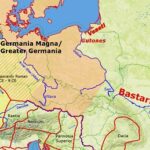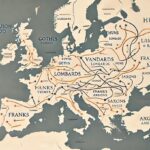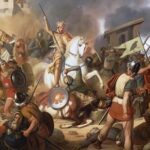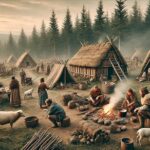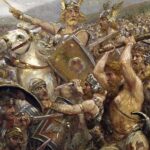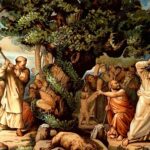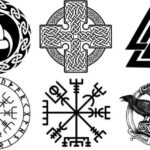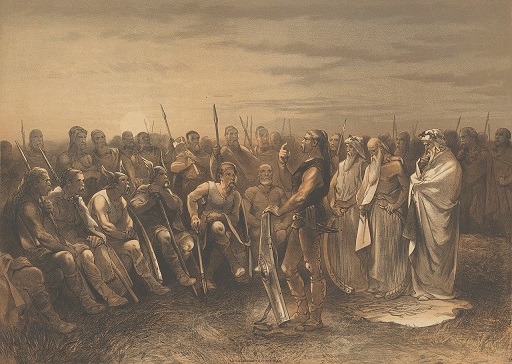
Long before the name “Germany” existed, the lands of Central Europe were inhabited by a diverse network of tribes known as the Germanic peoples. These groups—including the Saxons, Goths, Vandals, Suebi, and many others—were not unified by a single culture or identity but shared linguistic and cultural similarities. Their influence extended across northern and central Europe and played a critical role in shaping the continent’s early medieval history.
Origins and Early Development
The Germanic tribes likely emerged from the Nordic Bronze Age societies in Scandinavia around 500 BCE. By the time of the early Iron Age, these tribes began migrating southward into present-day Germany, Denmark, and the Netherlands. Their early settlements were largely rural, with communities centered around extended families and tribal chiefs.
Germanic society was predominantly agrarian, relying on small-scale farming, hunting, and animal husbandry. Cattle, sheep, and pigs were common livestock. Fields were cleared near forests and rivers, where tribes built wooden longhouses with thatched roofs. These homes often housed extended families and livestock under one roof.
Germanic legal culture was based on customary law and oral tradition. Disputes were resolved by tribal councils or assemblies known as things, where free men voted on matters of justice and governance. Personal honor and retribution formed the backbone of social order.
Language and Culture
The Germanic tribes spoke early forms of Proto-Germanic, the ancestor of modern German, English, Dutch, and the Scandinavian languages. Though they did not have a writing system until later, the runic alphabet (Futhark) eventually emerged, primarily used for inscriptions and ritual markings.
Cultural life revolved around oral storytelling. Bards and poets preserved epic tales and genealogies, passing down stories of heroic warriors and mythical ancestors. These oral traditions would later influence medieval epics like the Nibelungenlied.
Mythology and Religion
Germanic religion was polytheistic and animistic. They worshipped a pantheon of deities associated with war, nature, fate, and fertility. Key gods included:
- Odin (Wodan): Allfather, god of wisdom, war, and the dead.
- Thor (Donar): Thunder god, protector of mankind.
- Freya: Goddess of love, fertility, and battle.
Religious practices involved sacrifices (both animal and human), sacred groves, and rituals tied to seasonal changes. Shamans or priestesses likely played key roles in rituals. Burial practices varied, with grave goods often included to accompany the dead into the afterlife.
Interaction with the Roman Empire
By the first century BCE, Roman expansion brought them into direct contact with the Germanic tribes. Julius Caesar’s writings in Commentarii de Bello Gallico introduced the Roman world to names like the Suebi and the Ubii.
A turning point came in 9 CE with the Battle of the Teutoburg Forest, where an alliance of Germanic tribes under Arminius ambushed and destroyed three Roman legions led by Publius Quinctilius Varus. This defeat halted Roman expansion into Germania and established the Rhine River as the empire’s frontier.
Over the following centuries, the relationship between the Romans and the Germanic peoples oscillated between warfare and uneasy alliance. Many Germanic warriors served as mercenaries in the Roman legions, and some tribal leaders were granted Roman titles and land. Eventually, several tribes such as the Visigoths, Ostrogoths, and Franks would be instrumental in dismantling the Western Roman Empire.
Military Organization and Strategy
Germanic warriors were typically equipped with spears, axes, and shields. Armor was rare, reserved for elite warriors or leaders. The comitatus, or war band, was a core unit of loyal fighters surrounding a chieftain, often bound by personal loyalty rather than centralized command.
Raids and ambushes were common strategies, taking advantage of their knowledge of forested and marshy terrain. Warfare was deeply embedded in tribal identity and rituals, often involving symbolic gestures and ceremonies before battle.
Major Tribes and Their Legacy
- Goths: Divided into Visigoths and Ostrogoths; known for sacking Rome in 410 CE and establishing powerful kingdoms in Spain and Italy.
- Vandals: Migrated across Gaul into North Africa, where they founded a kingdom and sacked Rome in 455 CE. Their name became synonymous with destruction.
- Saxons: Settled in northern Germany and later migrated to Britain, forming the basis of Anglo-Saxon England.
- Franks: Settled in Roman Gaul and laid the foundation for the Carolingian Empire. Their legacy endures in modern France and western Germany.
- Suebi and Alemanni: Key players in Central European migration and contributors to the cultural and ethnic makeup of southern Germany.
Each of these tribes contributed to the collapse of the Western Roman Empire and laid the foundations for early medieval Europe.
Migration Period and the Birth of Medieval Kingdoms
The so-called Völkerwanderung or Migration Period (circa 300–700 CE) saw vast movements of Germanic peoples across Europe. Some tribes, such as the Lombards and Burgundians, established long-lasting kingdoms. Others assimilated into emerging feudal societies.
This era marked the beginning of the medieval transformation of Europe, where former tribal chieftains became kings, and warrior bands evolved into aristocracies. The fusion of Roman governance, Christian religion, and Germanic traditions laid the foundation for the Frankish Empire and ultimately the Holy Roman Empire.
The Germanic tribes were not a monolithic group of barbarians but a collection of dynamic, culturally rich societies. Their clashes with Rome, migrations, and state formations significantly shaped the political, cultural, and linguistic landscape of Europe.
From their mythologies and battle tactics to their evolving roles in post-Roman Europe, these tribes are foundational to understanding the roots of German identity. As we explore further chapters of German history, we see how the legacy of these early peoples continues to echo through centuries.
